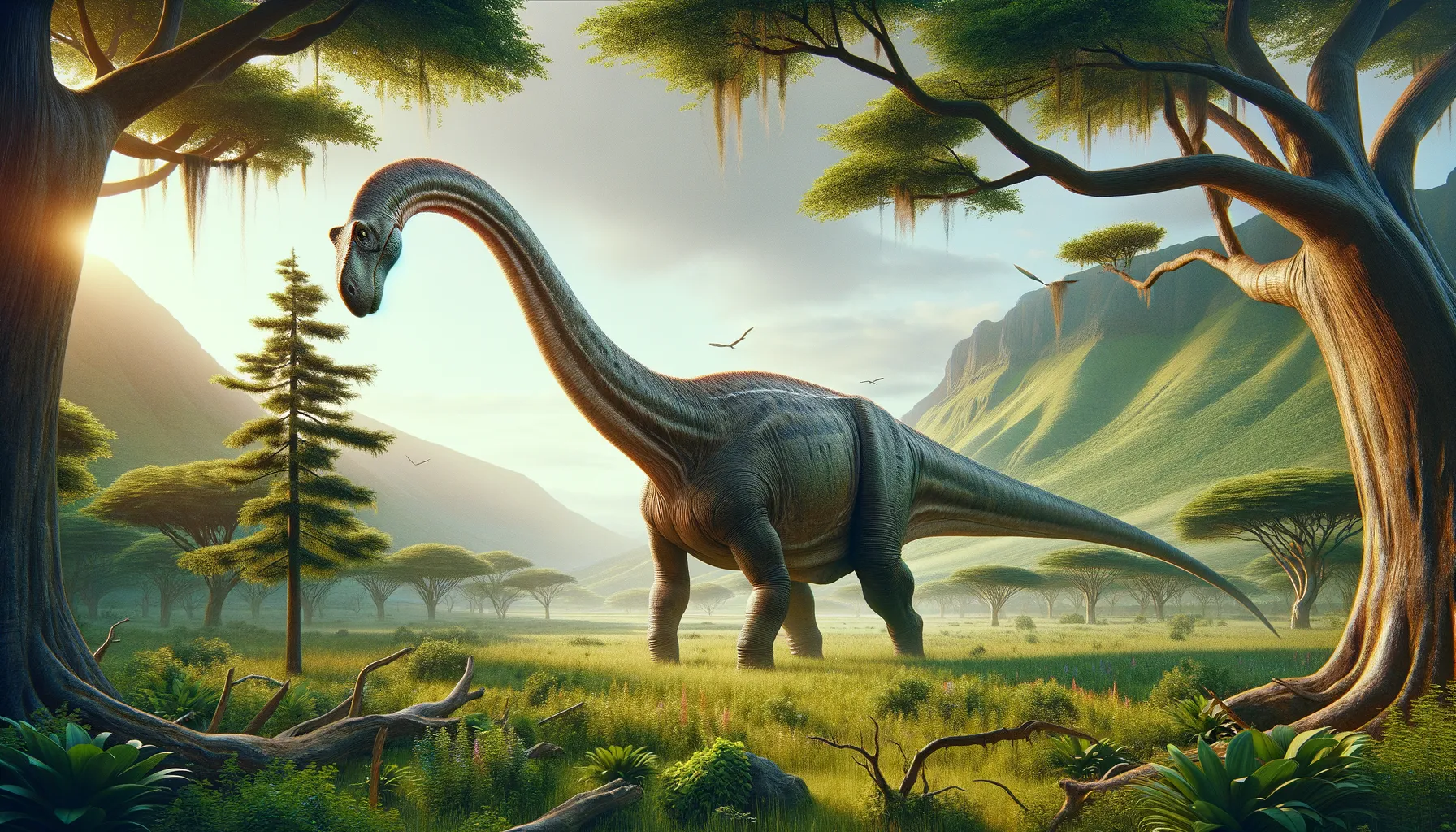
Diplodocus
The long-necked marvel of the Jurassic age.
Period
Jurassic
Length
Could reach lengths of up to 90 feet, longer than a school bus.
Height
Stood about 15 feet tall at the hips.
Weight
Weighed around 15 to 20 tons, like a large truck.
Diplodocus, with its iconic long neck and tail, was one of the longest dinosaurs of the Jurassic period. This gentle giant roamed what is now North America about 150 million years ago. It used its long neck to reach vegetation high in trees, making it a distinctive sauropod. Despite its size, Diplodocus had a relatively small head and lightweight build compared to other massive dinosaurs.
Diet
Diplodocus was a herbivore and primarily fed on plants. Its long neck allowed it to reach high branches and sweep low-lying vegetation, making it a versatile feeder in its ecosystem.
Hunting
Diplodocus did not hunt as it was a plant-eater. It likely spent much of its time searching for sufficient food to support its large size.
Environmental challenges
Diplodocus faced challenges such as finding enough food to sustain its massive body. It needed to consume large quantities of plant material daily, which might have been impacted during seasons of scarcity. Competition with other herbivorous dinosaurs for food resources was also a potential issue.
Speed
Diplodocus was not very fast, likely moving at a moderate pace suited for its size.
Lifespan
Diplodocus could live up to 70 or 80 years in the right conditions.
First discovery
Discovered in 1877 by Samuel Wendell Williston in Colorado, USA.
Fun Facts
- Diplodocus was one of the longest dinosaurs, reaching up to 90 feet in length, which is about the size of two school buses.
- Despite its massive size, Diplodocus had a relatively small head and brain, similar in size to that of a modern-day dog.
- It had a whip-like tail that was used for protection against predators, and possibly for communication with other Diplodocus.
- Diplodocus was a herbivore, and its long neck allowed it to reach high into trees to eat leaves and other vegetation.
- Fossil evidence suggests that Diplodocus might have traveled in herds, providing safety in numbers from predators.
- Diplodocus lived approximately 150 million years ago during the Late Jurassic Period.
- Its bones were relatively lightweight for their size, helping Diplodocus move its massive body more easily.
Growth and Development
Diplodocus hatched from eggs and experienced rapid growth, reaching colossal sizes quickly. Juveniles were vulnerable to predators, but their growth rate helped them reach safer, larger sizes relatively soon. The full development into a giant creature took several years.
Habitat
Diplodocus lived in semi-arid environments with river floodplains and open forests. These areas provided ample vegetation for feeding, as well as water sources essential for survival. The environment supported other large herbivores, creating a rich ecological community.
Interaction with other species
Diplodocus likely shared its habitat with other large sauropods and various dinosaur species. It may have had to navigate relationships with predators such as Allosaurus. Its size and herd behavior could have been a deterrent against lone predators.
Natural lifespan
Diplodocus could live for decades, potentially reaching 70 to 80 years of age.
Reproduction
Diplodocus laid eggs, likely in nests on the ground. It may have used communal nesting sites to enhance the survival of offspring through sheer numbers. The growth from hatchlings to full-sized adults was rapid, aiding survival.
Social behaviour
Diplodocus likely traveled in herds for protection and social interaction. Herd behavior could have helped deter predators and increased foraging success. Such social structures may have varied based on age groups or familial ties.
Fossil locations
Fossils of Diplodocus have been predominantly found in the western United States, particularly in the Morrison Formation of Colorado, Wyoming, and Montana. These areas have provided numerous skeletons and partial remains, contributing significantly to our understanding of this dinosaur.
